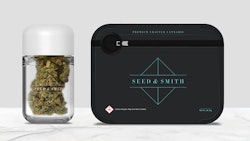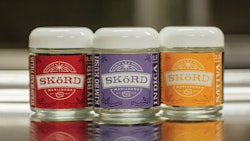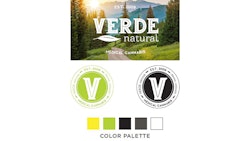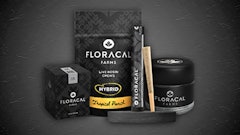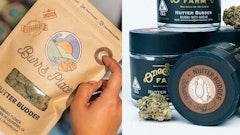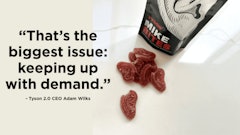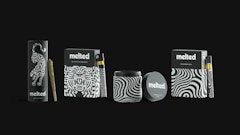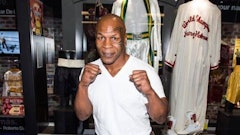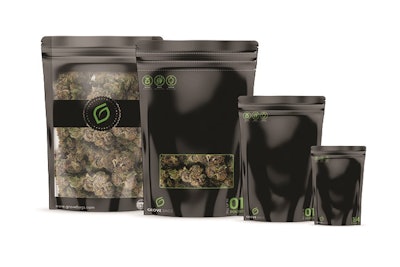

Astronomers have hypothesized that there are roughly 10 stars in the universe for every grain of sand found on Earth’s beaches. At times, it feels as if there are the same number of opinions regarding proper cannabis packaging.
The obvious reason for these varying opinions is that different products require different packaging—and there is a glut of both. Selecting packaging that highlights your brand and protects your product’s integrity is difficult enough. Toss in the fact that all those different containers, bags, jars and tubes must still comply with state regulations, and suddenly you’ve found yourself in a packaging black hole without a sense of direction.
To help make sense of it all, Cannabis Business Times spoke with:
- Jack Grover, Co-Founder & CEO, Grove Bags;
- Nick Jack, Chief Retail Officer, Diego Pellicer-Colorado;
- Eric Leslie, Chief Marketing Officer, Cheeba Chews; and
- Vanessa Toolson, Client Coordinator, N2 Packaging Systems
to get their insights and opinions on what to look for in a packaging partner, common packaging mistakes, brand positioning, compliance and more.
WHAT TO LOOK FOR IN A PACKAGING PARTNER:
No One-Time Deals
Jack Grover (JG): “Work with somebody that doesn’t view you as a one-time customer. You don’t want to work with a product broker that doesn’t [understand] cannabis, and more importantly, doesn’t [understand] your business. You want to work with the packaging provider that understands the importance of your packaging as investments and not as costs. [Packaging is] an investment in my bottom line. It’s an investment in making sure my products [are as] potent and medically robust as I intended … and it’s an investment in my brand.”
Success-Oriented
JG: “Find somebody that’s committed to your success. … That’s somebody who’s going to make sure you’re ahead of compliance issues, so you don’t expose your business to liability, [and] that you’re using [packaging] products that are food safe and FDA approved, so they don’t impart heavy metals or polymers onto your cannabis.”
Clean Facilities
Vanessa Toolson (VT): “A facility tour would be our recommendation. You must make sure product is handled with care in a clean space that is climate and humidity controlled. Many of our customers that package with our third-party partners use references and seek out packagers that they have seen do great work with other companies.”
There When You Need Them
Eric Leslie (EL): “Reliability. We push our material vendors to provide best pricing and quick turnarounds to meet our ever-changing needs. … We look for partners who are willing to step up when the times get tough and deliver when [we are] most in need. Lastly, don’t be afraid to make a switch if things aren’t working.”
PACKAGING GOALS:
Protect Products, Tell Stories
JG: “It’s very important to do two things with your packaging: One is to have packaging that protects your products and makes sure that [they have] peak potency, peak taste and no mold growth, etc.; the other goal of your packaging is to tell your brand story and become a fixture in your customer’s life. The package is something that makes a connection between your brand and your customer and the different experiences that they’re going to have while using your product.”
Create A Positive Connection
EL: “Compliance is always [the] No. 1 goal. A shop won’t stock your products if your packaging is questionable as it pertains to local regulations. Consumer experience is No. 2. If your packaging doesn’t create a positive connection with your customers, they’ll find other products that do.”
FINDING THE RIGHT PACKAGING FOR YOUR PRODUCT:
Consider the Plant’s Nature
JG: “Cannabis … is volatile. It’s still [degrading] after you’ve cut it off the stem. It’s [degrading] after you’ve dried it; it’s [degrading] after you’ve cured it or even extracted it. Making sure that you have packaging that works with the plant’s respiration process to maintain your weight and maintain potency [is important], particularly in a market where there’s a tremendous amount of financial incentive for cultivators for even the smallest increase in potency percentage.”
Don’t Compromise
VT: “Compliance, safety, branding and preservation. Not just one, but all these factors should be considered when you find a packaging solution. We urge businesses not to compromise. Each one of these areas is an important aspect of building your brand and protecting your investment.”
Environment & Storage
JG: “As a cultivator, it’s important to know where you are in terms of relative humidity, how the seasons affect your product and how long your storage times are. That’s going to tell you what type of packaging you need to invest in because, as a cultivator, you can lose up to 6 or 8 grams or more per pound from [weight loss due to] improper storage.”
Use Cannabis Specific Packaging
JG: “[A common mistake] is using packaging that is not ideal for cannabis. It could be dirty, metalized bags … that actually impart heavy metals that are cancerous onto your cannabis. … You’re going through all this trouble growing your cannabis and you do a lot for marketing; if you’re just throwing the product into some [package] that’s not ideal for cannabis, you’re doing your brand a disservice and you’re doing your customer a disservice.”
TRANSPORTATION:
Travel Conditions
JG: “[Is your packaged product being transported] in an air-conditioned van and is it rapidly getting to its destination, or is it going to be in a hot truck and is it going to take a little while to get there? [If it’s going to be] in that intermediary container for a while, you need to be investing in packaging that is going to protect the integrity of your product, that’s going to protect the weight over [the course of] that transportation, that’s going to be anti-static so it’s not going to leach trichomes off your buds. If it’s … going through the dessert at night, you’ll get wild ranges of humidity and temperature. Is your packaging designed to account for that? These are all important things because if you’re leaving [the product] in the [packaging] for a month and it’s traveling, [there’s a possibility, depending on the packaging] that you’re not going to pull the same cannabis out that you put in there.”
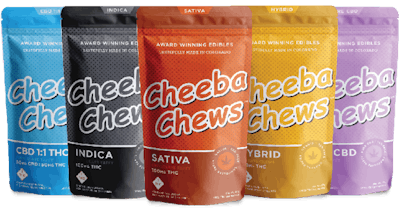
PACKAGING COSTS:
No Magic Number for Costs
JG: “It really depends on how much product you are cultivating, so it’s really hard to say what the actual number is in terms of dollar value or in terms of a percentage of your net revenue.”
You Get What You Pay For
VT: “The biggest mistake we see is people using an inferior package initially to save money. Often, the business-minded individual is drawn to the most economic package, only to find they pay more in the damages that it causes. Spoiled and damaged product will cost the business much more than upgrading to the best packaging available. Invest in your product the first time, and protect the time, money and energy it takes to create the product you are proud of.”
Bulk Can Backfire
EL: “In a traditional business, you can order larger volumes of packaging materials to reduce unit costs, but with each state defining their own regulations, our orders are smaller, more frequent and costlier. We can’t plan too far ahead with our packaging or we become stuck with a lot of waste when new regulations go into effect. … Recently, Colorado updated their state packaging icon with a very slight revision of the wording underneath their diamond symbol. The wording change meant everything in our inventory after July 1 was no longer in compliance. We had to throw away tens of thousands of dollars in packaging due to this small wording change.”
PACKAGING TO SUPPORT BRAND POSITIONING
Everything Matters
EL: “Your packaging makes a direct connection to your brand. If you use black jars instead of white ones, you are communicating something subtly different to your consumers. Everything from the materials used, to the design, to how you are displayed should be fully considered in the context of brand experience.”
Packaging Reflects Your Product
Nick Jack (NJ): “A high-end brand needs to have a high-end look and feel. Value, [or lower-cost], products should have value package branding rather than an expensive look. A sleek, minimalistic approach could be a great way for a fractional distillation company to position their product in the market, while a fun and loud package design could place your edible brand into an attractive recreational position. Basically, your product packaging should support where you want your product to be positioned in the market.”
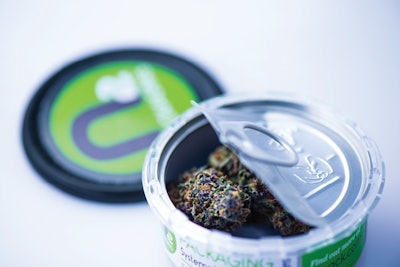
Tell A Story
JG: “Packaging is the No. 1 way, in my opinion, that someone can support their brand positioning. … It’s also how your brand tells a story. It’s the cover of the book, so to speak. Having beautiful packaging that … stands out to customers is important because if you, as a cultivator, have a story, if you have a background and you have heritage … that needs to speak and that needs to be demonstrated in your packaging and in your branding.”
WORKING WITH DISPENSARIES
Compliance Is Always Key
NJ: “The first thing we always check for is to make sure the package is compliant. We look to make sure it has the correct required verbiage, is child resistant, doesn’t have a design that would appeal to children or anyone under the age of 21, doesn’t have any cartoon characters, is resealable and is opaque. Rarely do we have a vendor bring in packaging that isn’t compliant, however, it does still happen.”
Bigger Isn’t Always Better
NJ: “Big and bulky package options can be a turn off for dispensaries, as well as non-child-resistant packaging that needs an exit bag to leave the store compliantly. We have seen companies get creative with their package shapes to make it easier for dispensaries to stack and store their products in inventory, a small detail that goes a long way with a lot of store managers.”









